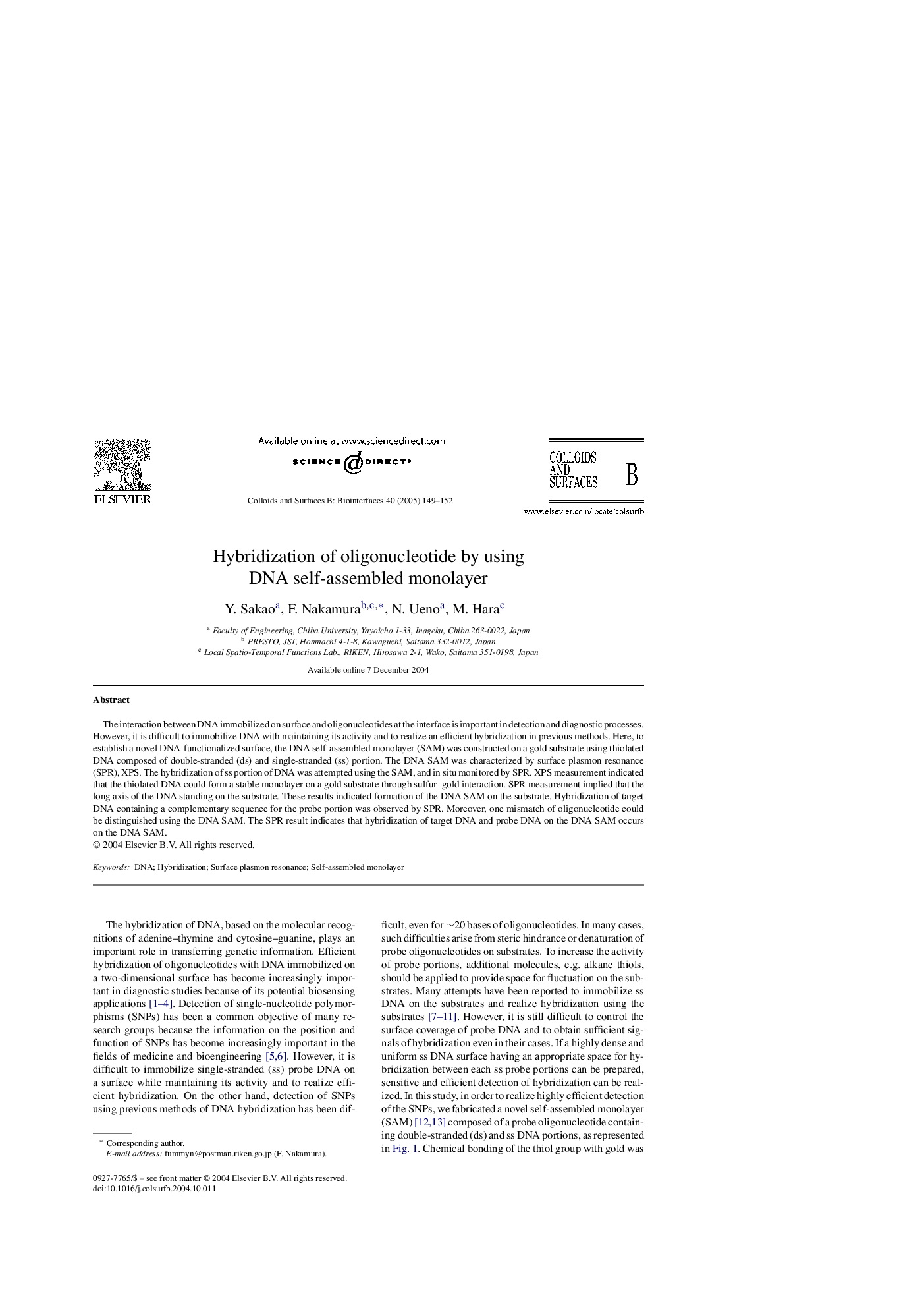| Article ID | Journal | Published Year | Pages | File Type |
|---|---|---|---|---|
| 9678413 | Colloids and Surfaces B: Biointerfaces | 2005 | 4 Pages |
Abstract
The interaction between DNA immobilized on surface and oligonucleotides at the interface is important in detection and diagnostic processes. However, it is difficult to immobilize DNA with maintaining its activity and to realize an efficient hybridization in previous methods. Here, to establish a novel DNA-functionalized surface, the DNA self-assembled monolayer (SAM) was constructed on a gold substrate using thiolated DNA composed of double-stranded (ds) and single-stranded (ss) portion. The DNA SAM was characterized by surface plasmon resonance (SPR), XPS. The hybridization of ss portion of DNA was attempted using the SAM, and in situ monitored by SPR. XPS measurement indicated that the thiolated DNA could form a stable monolayer on a gold substrate through sulfur-gold interaction. SPR measurement implied that the long axis of the DNA standing on the substrate. These results indicated formation of the DNA SAM on the substrate. Hybridization of target DNA containing a complementary sequence for the probe portion was observed by SPR. Moreover, one mismatch of oligonucleotide could be distinguished using the DNA SAM. The SPR result indicates that hybridization of target DNA and probe DNA on the DNA SAM occurs on the DNA SAM.
Related Topics
Physical Sciences and Engineering
Chemical Engineering
Colloid and Surface Chemistry
Authors
Y. Sakao, F. Nakamura, N. Ueno, M. Hara,
